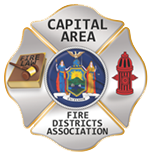**Running a Productive Fire District Meeting
Linda Willing
Ask any commissioner what their favorite part of the job is, and never – and I stress never – will they say, “Going to meetings.”
A few years ago, I did an informal survey among fire service leaders regarding why they disliked meetings so much. The responses were consistent across diverse departments. “It’s frustrating. Nothing ever gets done” was a common sentiment. “Nobody ever really listens” was also a frequent observation. The most common response about meetings? “A waste of time.”
But meetings are not going away any time soon, even if they happen virtually (where the only saving grace for some people is that they can multitask out of the camera’s view). Plus, when done well, meetings can be a positive forum for sharing information and ideas and problem solving.
MEETING PLANNING IS KEY
Many things get in the way of having productive meetings: inadequate preparation, lack of focus, poor time management. Lack of attention to any of these elements can cause meetings to go off the rails.
Have an agenda: Every meeting should have an agenda that is sent out to all participants prior to the gathering. This agenda should include any background materials for discussion, and it must be emphasized that all participants are expected to have read those materials prior to meeting together as a group.
Stay focused: Meetings should also have a specific focus, as outlined in the agenda. While having some brief time set aside for general discussion can be useful, the meeting itself must stick to the stated purpose.
Respect attendees’ time: Time limitations must be respected. Of course, people need to be heard, but personal issues, off-topic discussions, side conversations and general rambling must be kept to a minimum. Many business leaders believe that meetings should never last longer than one hour long. In fact, some think they should be much shorter than that.
Facilitating group dynamics
The bottom line is that meetings must be managed to be successful, and this means that someone must fill the role of facilitator. This job often falls to the highest-ranking person in the room, though that is not necessarily the best approach. Among groups that meet regularly, it can be a good practice to rotate the facilitator’s job among all attendees.
Facilitators are responsible for the business of running the meeting – the preparation of pre-meeting materials, notifying all attendees and tracking attendance. Perhaps most importantly, facilitators have a role in guiding discussion, including paying attention to who speaks first. The fire district board chairman is a facilitator with one vote, no more, no less.
Studies show that people in groups, either in person or virtually, are disproportionately affected by the first opinion expressed on any given topic. Psychologists call this the cascade effect, (I call it mob rule) – if the first person speaking on a topic is favorable toward it, there is a greater chance that the next person who speaks will agree rather than disagree. Each subsequent speaker then has increasing pressure to go along.
There are many reasons why this happens; people may genuinely agree, or they may not have a strong opinion and find it easier to just go along. They may feel pressure to fit in with the group and not appear uninformed or disagreeable. Whatever the reasons, the effect can be premature agreement and cursory analysis of situations or problems.
A good facilitator can mitigate this effect by being deliberate about how members participate. Instead of allowing a free-for-all atmosphere where anyone (and usually the same few people) speak first and most often, a facilitator can call on people, or assign topics where everyone has the chance to have the first word.
Everyone should have the opportunity to speak during a meeting but creating this norm can mean changing current patterns regarding how things happen. Such change is possible but must be handled professionally. Leaders must explain how they intend to alter the format of meetings and why these changes will benefit members and the organization. Such changes must be framed in a positive light – how the new format will benefit everyone, not that one member is talking too much.
Committing to change
Meetings will never be anyone’s favorite activity, but when managed well, they can be a productive part of the workday. Taking steps to overhaul how your organization runs its meetings is work that can and should be shared among all who participate, but as with most positive change, it will come down to leadership setting the tone.
